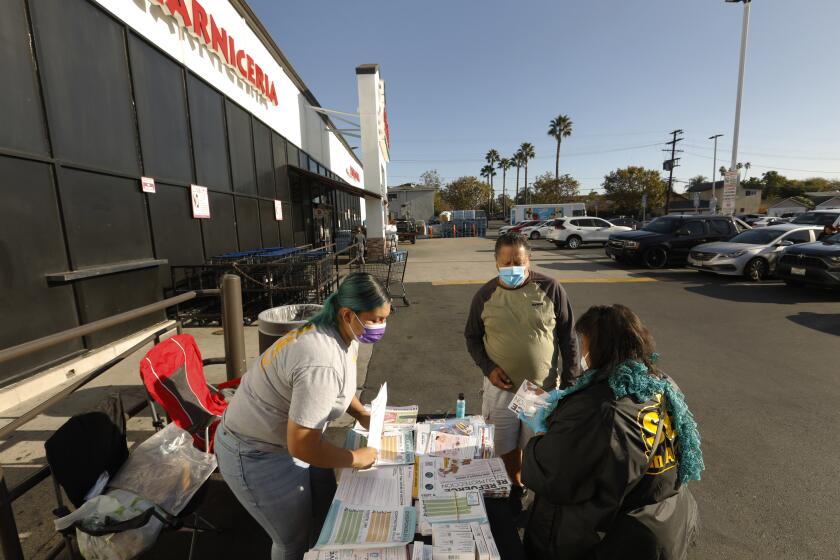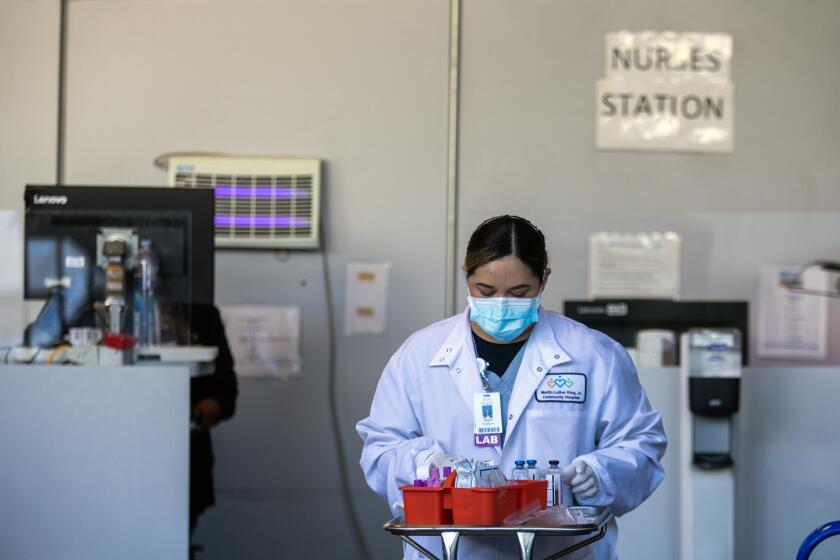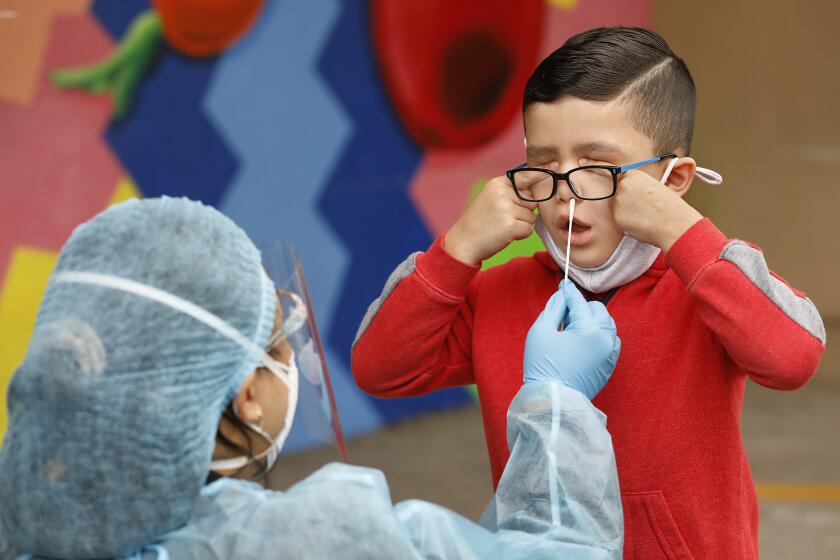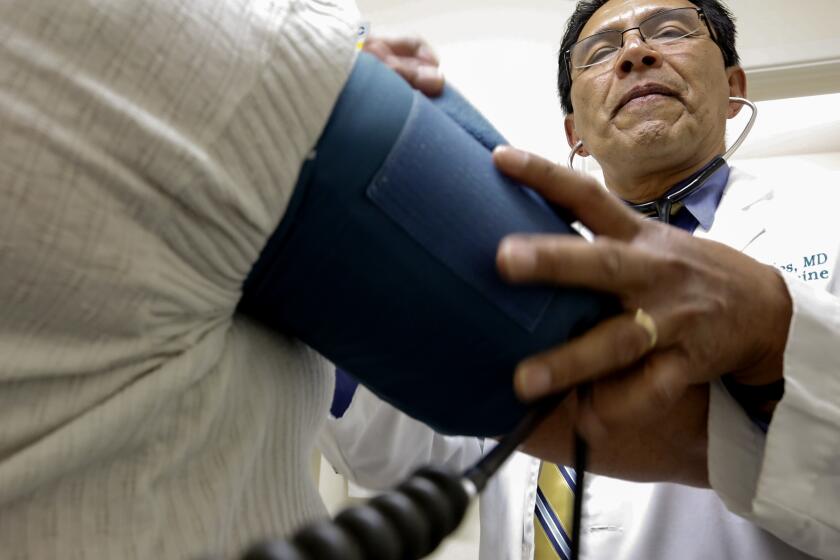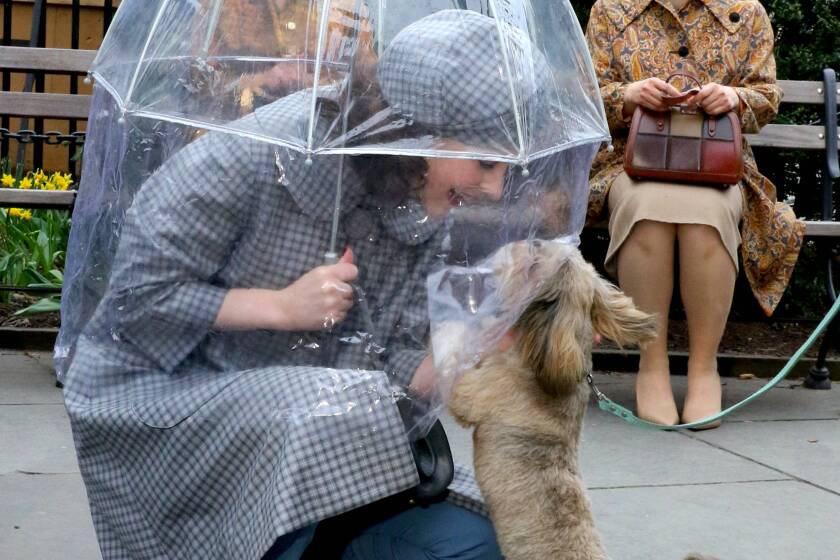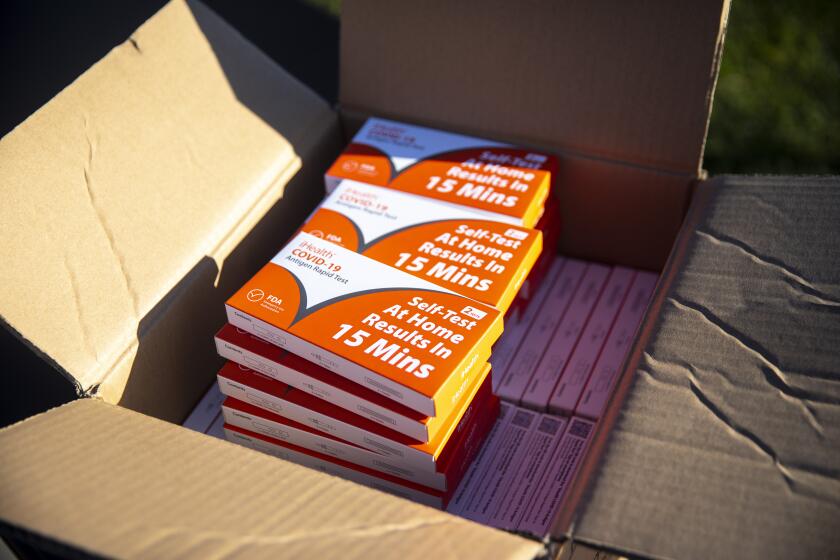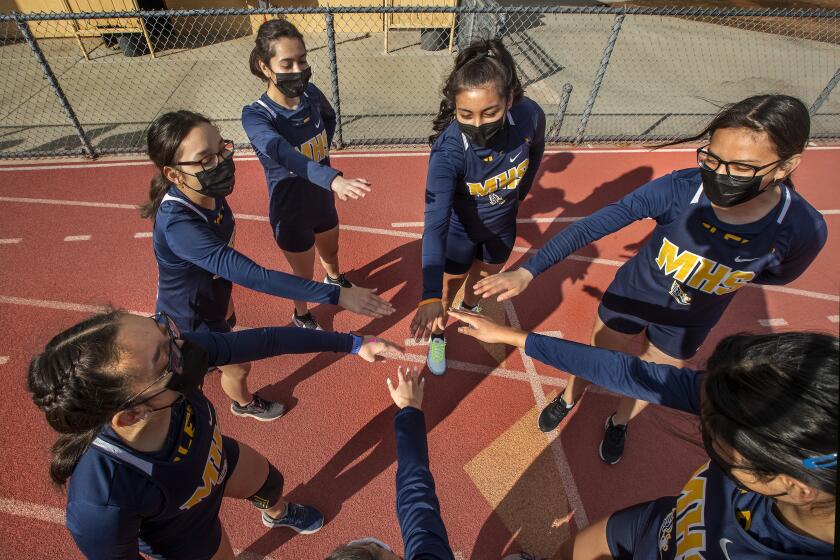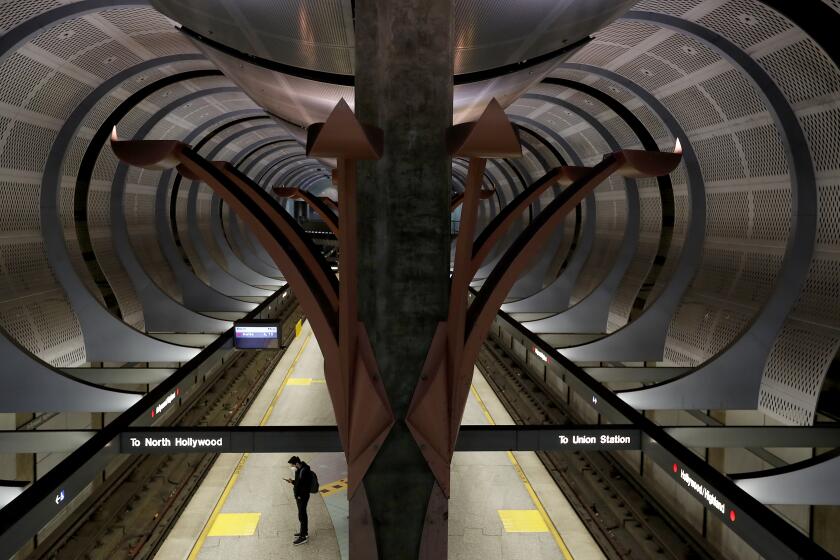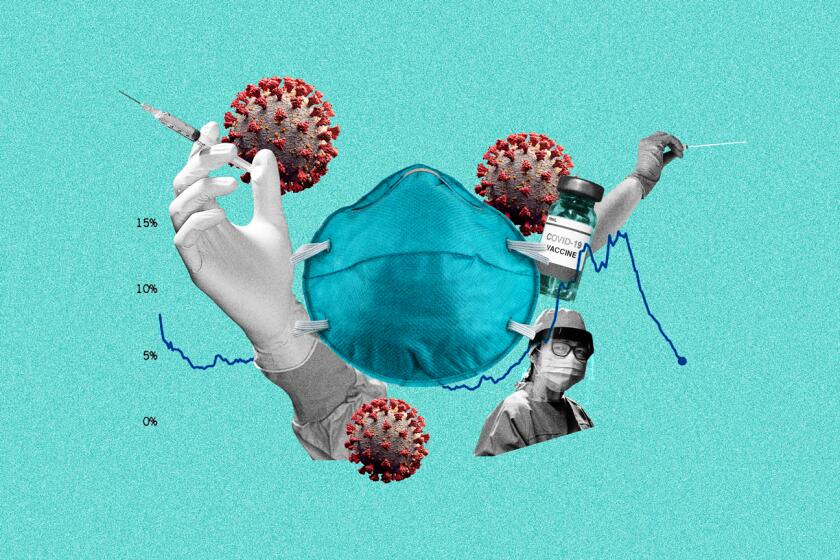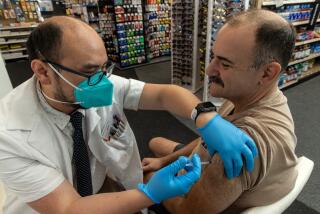California COVID-19 rules ease as emergency declarations end. Here’s what’s changed
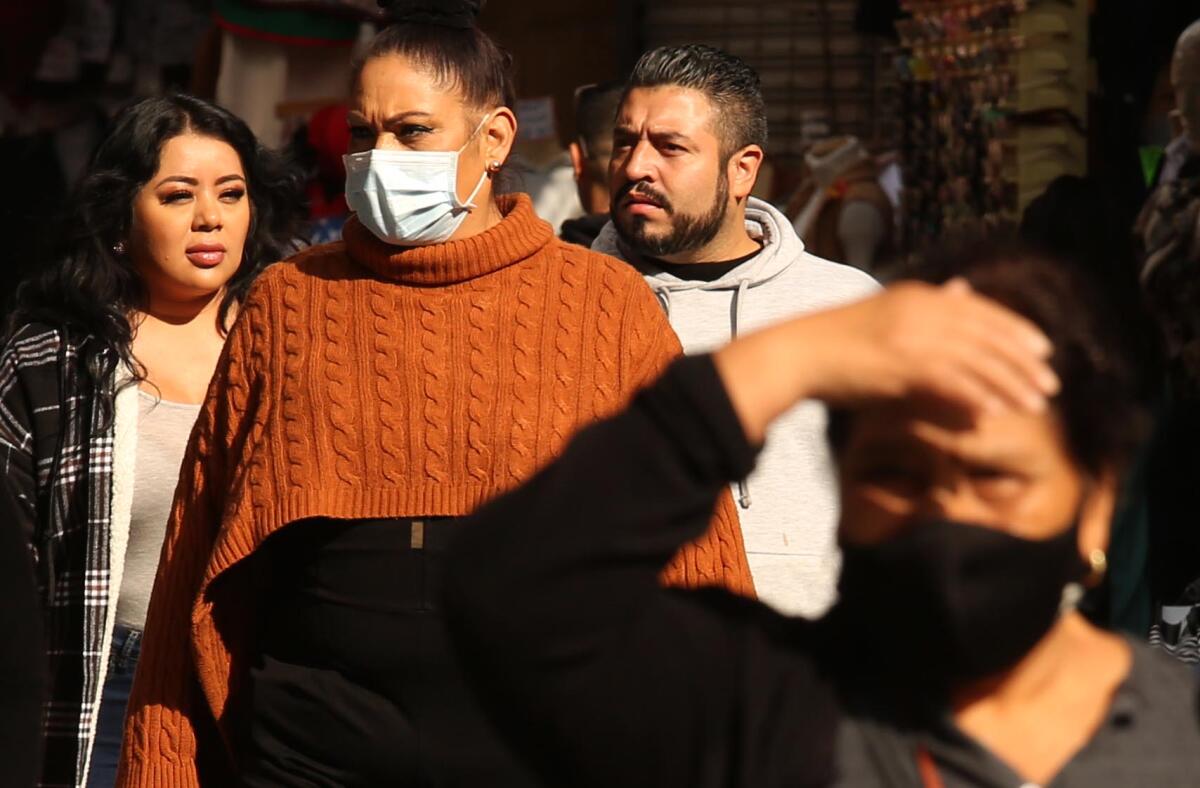
The steady unwinding of COVID-19 emergency declarations has ushered in a slate of changes to Los Angeles County’s pandemic guidance, including when to mask, quarantine or isolate, as well as the reporting of new infections and outbreaks.
The most significant — the easing of government-issued masking orders for patients and visitors in healthcare settings — took effect Monday in L.A. County. In other California counties, masking orders for doctors and nurses also have expired.
The tweaks are the latest reflection of a broad new phase of the pandemic, one characterized more by individual risk assessment and targeted intervention than sweeping measures or restrictions.
“With the rescinding of many emergency orders these past weeks, there are questions about which sensible protections remain important to consider,” said L.A. County Public Health Director Barbara Ferrer. “Given the differing risks both by setting and by individual characteristics, the goals of reducing disruptions and taking care of those most vulnerable remain important.”
The county public health chief says emergency orders are no longer needed ‘to ensure we have and can use life-saving tools and mitigation strategies.’
Here’s a look at the newest rules:
What are the new mask rules in healthcare settings?
State health officials on Monday lifted the general mask order for everyone in healthcare settings. Hospitals, doctor’s offices and other facilities can choose to retain their own requirements.
Some counties, such as Orange County, will be as permissive on masks as the state allows. Others are opting for stricter rules.
In Los Angeles County and San Francisco, health officials have lifted the masking order for patients and visitors. But new local orders will still require doctors, nurses and other employees to wear masks while providing patient care or working in patient areas at places such as hospitals, clinics, skilled nursing facilities and dialysis centers.
Among the changes announced by the California Department of Public Health will be the end of the statewide mask mandate in healthcare and other indoor high-risk settings — including correctional facilities and homeless shelters — beginning April 3.
Masks also are still required in L.A. County and San Francisco for other personnel, such as janitors, security officers, secretaries and volunteers who work in patient-care areas, as well as those who temporarily enter healthcare settings, such as firefighters, emergency medical technicians and police officers.
Long Beach and Pasadena, which have their own public health departments, are aligning with L.A. County’s mask policy for healthcare settings. L.A. County’s mask policy will be reassessed in September.
Alameda County and Contra Costa County have retained a mask order for staff in skilled nursing facilities. Berkeley, which has its own public health department, is aligning with Alameda County.
Santa Clara County lifted a local mask order for everyone in healthcare settings Tuesday, but will implement one again next fall during its annual “designated winter respiratory virus period” — defined as Nov. 1 to March 31.
It’s 2023 and you just tested positive for COVID-19. Now what? The latest CDC protocols, isolation recommendations, ways to treat it and ways to prevent long COVID.
How have mask orders changed for shelters and jails?
California has ended the mask order for everyone in shelters and state and local jails and prisons when the COVID-19 community level is medium or high. All of California’s counties have for weeks been in the low COVID-19 community level, a category designation by the U.S. Centers for Disease Control and Prevention that indicates the coronavirus is neither spreading rapidly nor causing undue stress on healthcare systems.
San Francisco, however, has extended a mask order to personnel in county jail facilities and juvenile halls where people are incarcerated.
How long do I need to stay home if I get COVID-19?
L.A. County on March 13 released guidance that those infected with the coronavirus should stay home for at least five full days after they test positive or experience their first COVID-19 symptoms.
They can leave home after Day 5 if they’ve been fever-free without medication for 24 hours and their symptoms are either no longer present or are mild and improving, Ferrer said.
That guidance, which is identical to that issued by the state of California, is advisory — not a formal health order. However, L.A. County retains the authority to issue individual isolation orders.
The new guidelines are a notable relaxation of L.A. County’s earlier order, which required residents to isolate for 10 days but allowed people to exit after Day 5 if they tested negative.
However, county health officials still recommend infected people test negative between Day 5 and Day 10 if they want to leave isolation during that time.
“This would reduce the chances of infecting another person with COVID,” Ferrer said.
California will soon require Medi-Cal recipients to prove their eligibility again. But it has a safety net for people who lose their coverage.
Do infected people still need to wear masks while they recover?
For the general public, L.A. County has ended its requirement that coronavirus-infected people wear a mask around others for 10 days following a positive test result or the onset of symptoms. Now, that masking period is a strong recommendation, unless an individual tests negative on back-to-back tests taken at least one day apart.
But there are stricter mask rules for infected employees returning to worksites. The California Division of Occupational Safety and Health, also known as Cal/OSHA, says employees must wear masks around other people for 10 days.
That requirement would also apply to schoolteachers, who are bound by Cal/OSHA rules.
On the other hand, the relaxed county rules mean recovering infected schoolchildren no longer are required to wear masks at school when they’re able to return to class — though L.A. County recommends they do so for the full 10-day period.
The change brings to an end almost three years of strict COVID-19 safety rules meant to help limit the spread of the virus on sets.
What should people do if they’ve been exposed to an infected person?
L.A. County has lifted the requirement that people exposed to the coronavirus wear a well-fitting mask around others for 10 days in indoor settings or when near people at high risk for severe illness. However, as with other masking guidance, the county still recommends doing so.
People who have been exposed to the coronavirus should consider getting tested as soon as possible, Ferrer said. If negative, they should take a follow-up test three to five days after exposure.
In smaller enclosed settings — such as homes, clinics, waiting rooms and airplanes — people are considered to have been exposed to the coronavirus if they shared the same airspace with an infectious individual for 15 minutes or more over a 24-hour period.
In larger indoor venues — those greater than 400,000 cubic feet per floor, such as warehouses, large retail stores, open-floor-plan offices, factories and food processing facilities — an exposure is defined as being within six feet of an infected person for a total of 15 minutes or more over a 24-hour period when they were infectious.
Federal regulators have extended some coronavirus tests’ expiration dates, meaning that certain offerings are now usable for months longer.
Are workplaces required to notify employees of a case at work?
Yes. Cal/OSHA requires workplaces to notify employees of coronavirus cases at the workplace, and make testing available at no cost to employees who were exposed to the person with COVID-19.
Are schools required to tell students and parents that students were exposed?
No. L.A. County strongly recommends — but does not require — that schools notify students and their parents when students are exposed to a coronavirus-infected person while he or she was infectious.
What are the current general masking recommendations?
L.A. County ended its recommendation for universal masking in indoor public settings in late January. For the general public, the decision should be based on personal preference, Ferrer said.
A new study examines the factors that caused some states to have COVID-19 mortality rates that were four times higher than others.
“People who are elderly, immunocompromised, have underlying health conditions or have many exposures should consider masking in indoor public spaces,” she said. “Masking is also recommended for those who have regular or planned contact with someone who’s vulnerable.”
As masks have become less common, some people have questioned or ridiculed those who continue to wear them. Ferrer said that’s inappropriate.
There could be many reasons people choose to wear masks, she said, such as illness, having a compromised immune system and having family members who are vulnerable.
“We could just be somebody who wants to be super careful,” Ferrer said.
It’s 2023 and you just tested positive for COVID-19. Now what? The latest CDC protocols, isolation recommendations, ways to treat it and ways to prevent long COVID.
Do COVID outbreaks still need to be reported to the county?
Yes. Businesses and facilities in L.A. County need to report clusters of coronavirus cases to the county Department of Public Health within 24 hours.
Workplaces, shelters and educational settings need to report three or more linked coronavirus cases that occur within 14 days, or when 5% of workers or residents test positive at settings with 100 or more employees or residents.
A linked case refers to people who were present in the same setting during the same time while infectious.
Healthcare facilities must file a report when there are two or more linked coronavirus cases among patients four or more days after admission, or there have been three or more linked cases among staff in 14 days.
And skilled nursing and community care facilities must notify the county when there is one or more resident cases, or three linked cases among staff in 14 days.
This is the final edition of Coronavirus Today, but it doesn’t mean our coverage of the pandemic will end.
Are outbreaks still happening?
Yes. As of Wednesday, L.A. County health officials were investigating 126 outbreaks, most of which were in skilled nursing facilities.
How is data reporting changing?
L.A. County has ceased daily reporting of coronavirus cases and COVID-19 deaths and will instead release those figures weekly, on Thursdays — the same day as the California Department of Public Health.
However, the county could pivot to more frequent reporting should pandemic trends change, Ferrer said.
Data reporting is generally becoming more infrequent as the COVID-19 emergency winds down. Johns Hopkins University shut down its lauded COVID-19 data tracking endeavor last month. The Los Angeles Times is working to simplify its own COVID-19 tracker and is seeking reader input on what that resource should look like.
Are vaccines safe? When can I get a booster dose? Do I have to wear a mask? We’ve answered hundreds of newsletter readers’ questions. Here’s an archive.
What does wastewater data show?
Officials note that case tallies don’t provide a complete picture of how the pandemic is playing out, as many infections are detected using at-home tests and not reported to local health departments.
Wastewater tracking can help fill in those gaps. Data from L.A. County’s sewage plants show coronavirus levels falling to levels of “low concern,” significantly down from the peak recorded in the late autumn. For the most recent week’s data available, coronavirus levels in wastewater at the county’s largest sewage treatment plants were 21% of the autumn and winter peak.
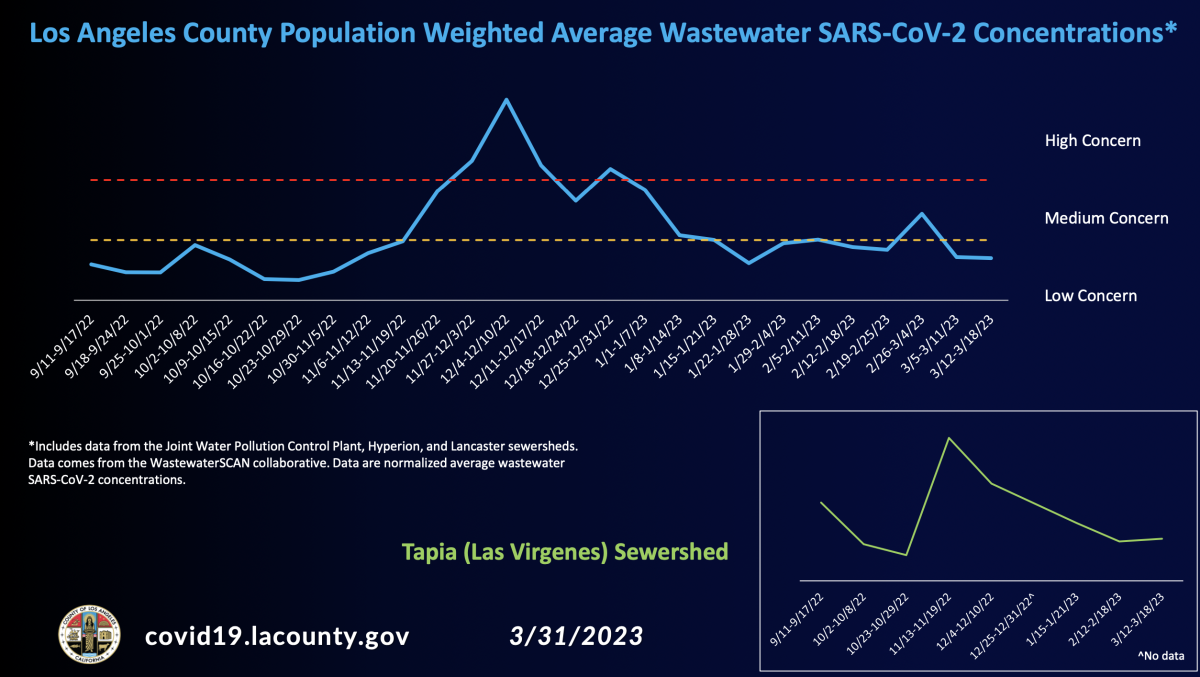
Nonetheless, the data show there are frequent fluctuations in coronavirus levels in wastewater, according to Ferrer.
“These are likely to continue in the near future because they reflect the reality that COVID-19 continues to circulate amongst those living, working and visiting L.A. County,” she said.
More to Read
Sign up for Essential California
The most important California stories and recommendations in your inbox every morning.
You may occasionally receive promotional content from the Los Angeles Times.
